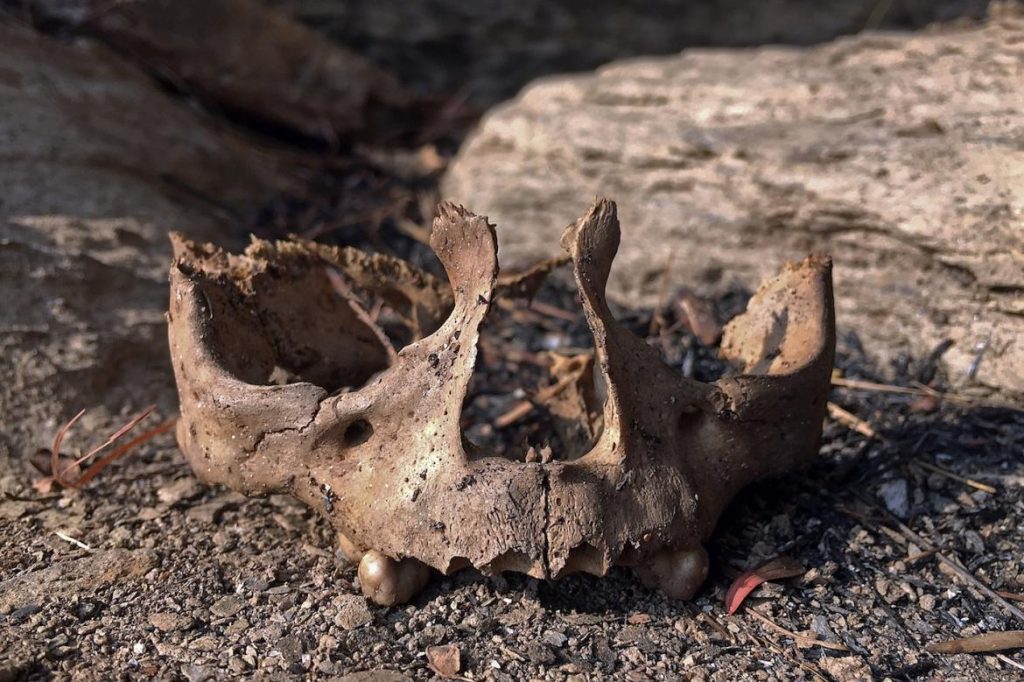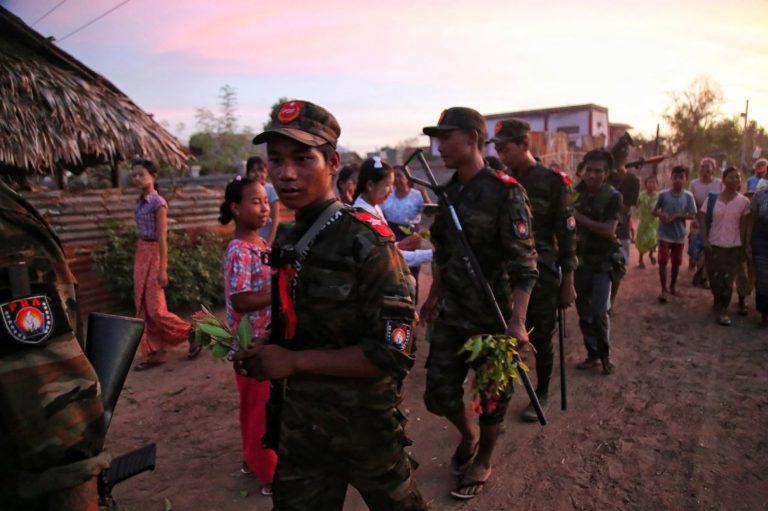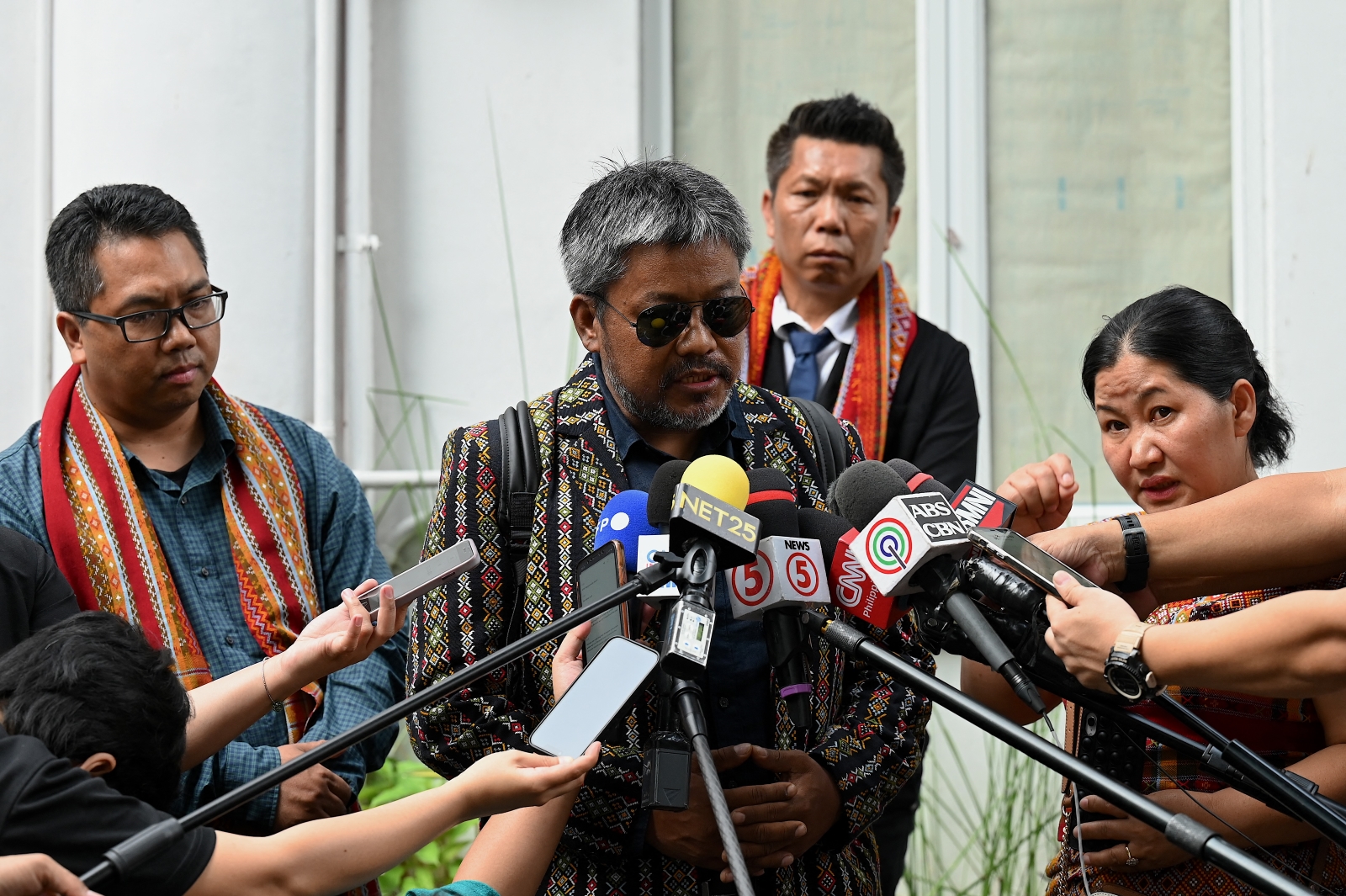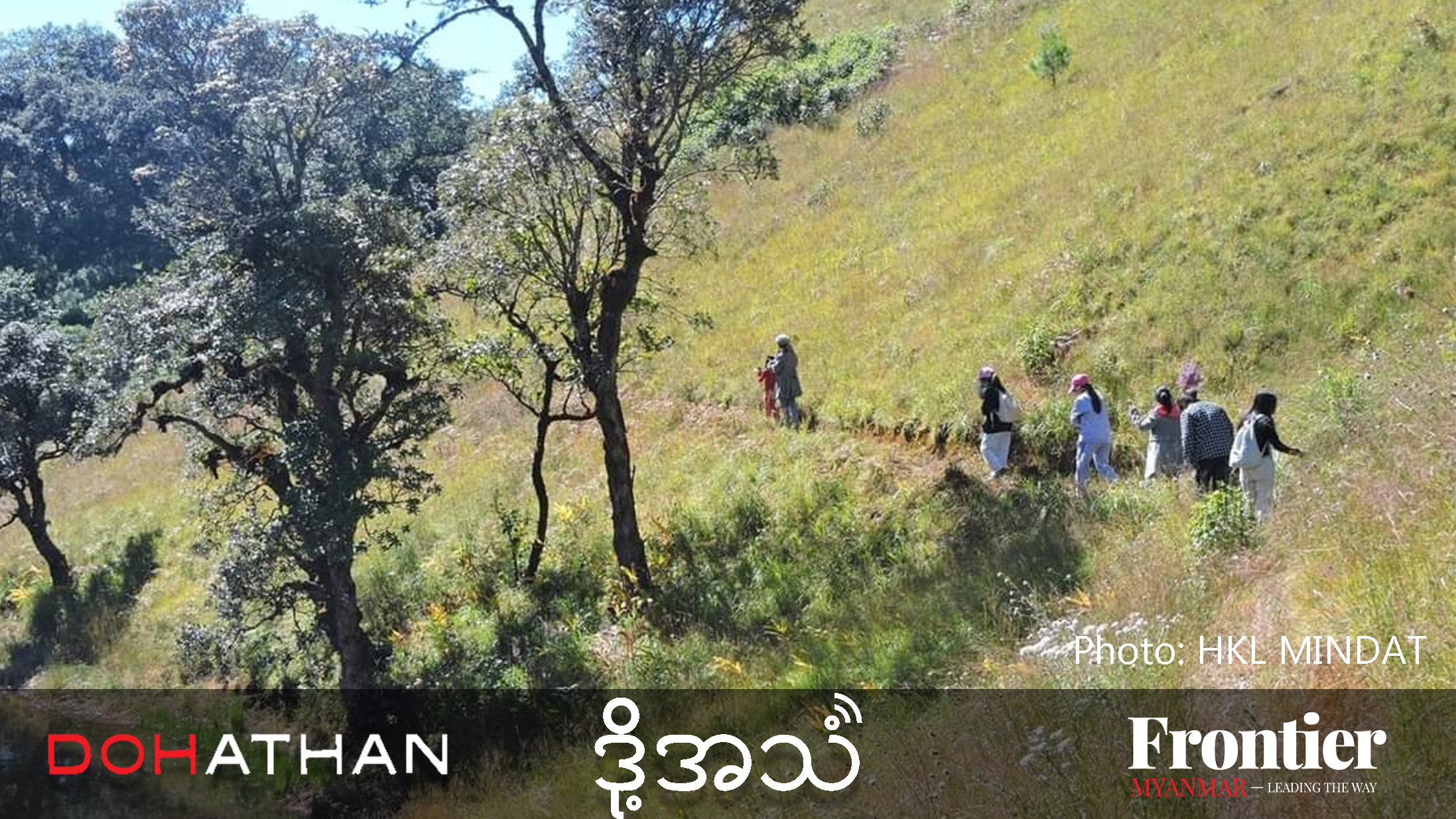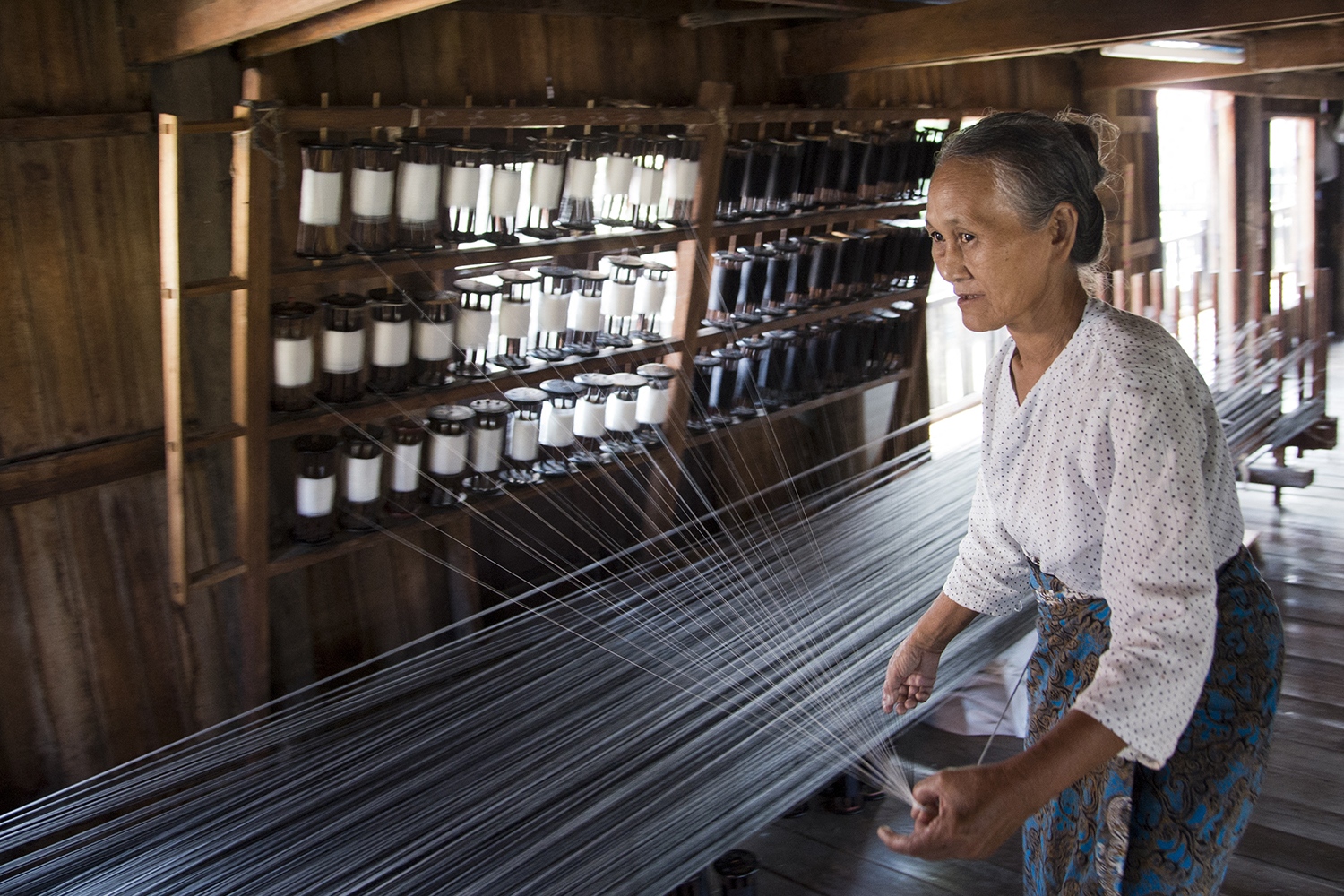Residents of a village in Chin State are using the remains of their animist ancestors as playthings.
By JOSHUA CARROLL | FRONTIER
Photos CHARLOTTE ENGLAND
The steep, treacherous climb up the hill overlooking Parte village in Chin State offers striking views of the surrounding green mountains, terraced farms below and the craggy peak above.
Trees and saplings cling to the sparse hillside and, here and there, a piece of human bone or a fragment of skull pokes out from among the short, thick grass.
At the peak, piles of bones spill from the entrance of a small cave and litter the ground. Jawbones, hip joints, sections of spinal columns and ribs lie in a chaotic mix under the burning sun.
The remains are from bodies left until just a few decades ago, before the village converted to Christianity at the end of World War Two, villagers say.
Support more independent journalism like this. Sign up to be a Frontier member.
The villagers followed animist beliefs before they converted to Christianity and had placed the remains of at least 200 people in the cave and three other nearby caves. They stacked their dead on top of one another dressed in traditional Chin clothes.
It’s not clear when, but at some point the villagers began playing with the remains. It seems that as the newly converted village began entombing its bodies in a Christian graveyard, the skeletons on the hilltop lost their sacrosanct status and became more of a curiosity.
“We would go up to the cave to play, and we’d try and scare each other,” said one elderly villager as he recalled visits to the peak as a young man, when the remains were still clothed. “My friend beat the bones and made dust come up and we laughed.”
parte_graveyard_iphone_edit.jpg
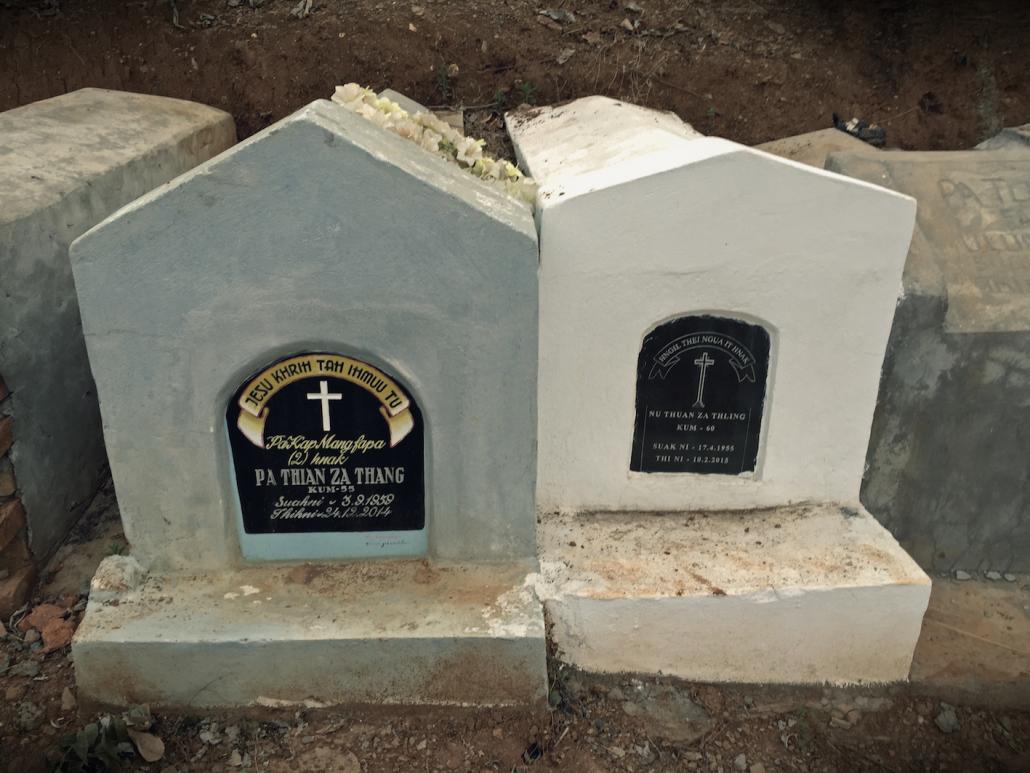
Charlotte England / Frontier
Others made impromptu music by grabbing a pair of long, straight femur bones and tapping them against a rock like drumsticks. Another popular pastime involved rolling skulls down the hillside to see how far they would tumble. This game, though, has become less common as the supply of skulls has depleted.
Our guides from the nearby town of Falam had fun plucking jawbones, some still with yellow teeth in them, from the jumble on the floor and arranging them in two neat rows on a rock.
While it might seem odd for a community to treat its ancestors this way, Salai Lian Sang, the village chief, said their animist predecessors did not leave any written records, so the remains are anonymous.
“It looks to be something that to our eyes is not that respectful but in many ways, they may not see it that way,” said archeologist Dr Duncan Sayer, an associate at the Centre for Death and Society at the University of Bath in Britain. “They are their ancestors so really it’s their choice, the community’s, what they do with them,” Sayer told Frontier in a telephone interview.
“We build on the cemeteries of our dead quite a lot, don’t we? We build railway lines on the top of them, we excavate them and study them. And that’s just our way of revisiting those people and those remains and sort of reusing our own past. So it’s similar except that perhaps there’s less fun attached to it,” he said.
The conversion to Christianity has to an extent separated the village from its pre-war past. “The culture has changed,” said Lian Sang as he sat on his porch a few yards from the church with a group of friends, some puffing on cheroots.
“It’s fascinating that their conversion to Christianity transformed their attitudes towards those remains, if it did,” said Sayer, “to see how that relationship has transformed over time with that conversion as a sort of punctuation mark in the way they think of their own dead.”
amen_and_tun_lians_jaw_bone_arrangement_iphone_edit.jpg
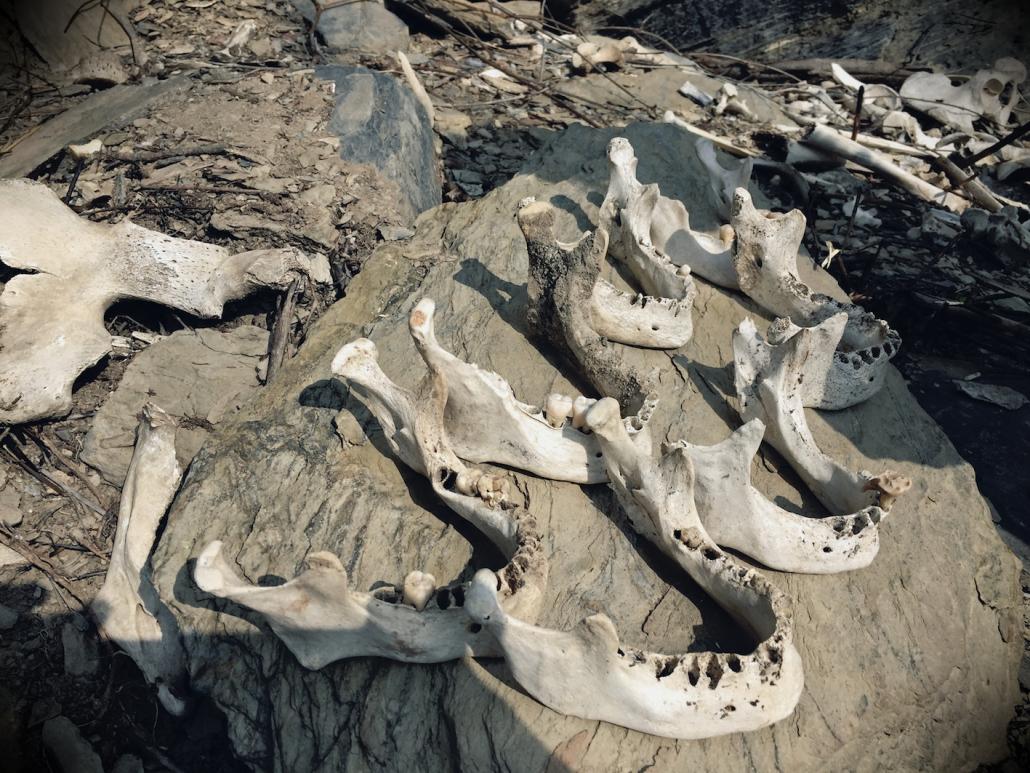
Charlotte England / Frontier
Most residents of Chin State converted to Christianity over several decades following the arrival of American missionaries in 1899. Small, rustic churches topped with crucifixes are seen in almost every village, and the dead are remembered on Christian tombstones.
Lian Sang is unsure why his animist forefathers chose to leave bodies in the caves. They worshipped large trees and rocks, he said, but he added that the caves might have simply been a practical choice; they provided some shelter from the elements and were far from the villagers’ houses.
Despite the cultural shift, the village’s animist history is still passed on orally to younger generations.
Lian Sang’s father told him about his ancestors’ funeral rites. “During the service they played music and got drunk and danced,” he said. The service would start at the deceased’s house, then up to eight people would carry the body up the hill on a stretcher made of bamboo and animal hide, dancing and singing with other mourners as they went.
“After they put the body in the cave, they came back to the house and they drank and had meat. They had mutton and pork and had a good time.”
Today the dead are unlikely to enjoy such a lively send-off, he added. There is no longer any drinking or dancing, he said. “Now we just read the Bible.”


